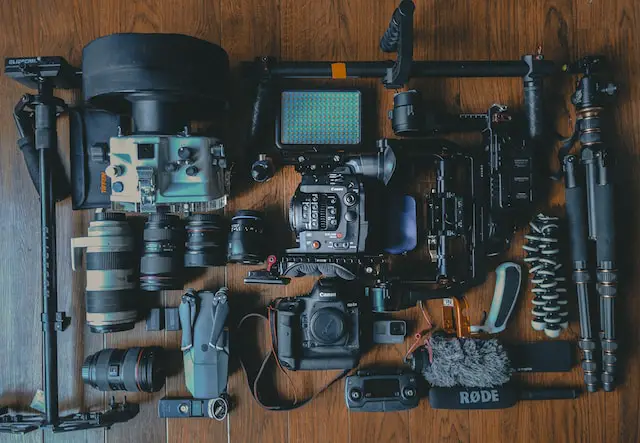If you’re a filmmaker on a budget, you know how important it is to find equipment that is both affordable and high-quality. One of the most important pieces of equipment for any filmmaker is the camera. Fortunately, there are many cameras available that are perfect for filmmakers on a budget.
When it comes to choosing the best camera for filmmaking on a budget, there are many factors to consider.
First and foremost, you’ll want to consider the camera’s image quality. A good camera should be able to produce sharp, clear images with accurate color reproduction. You’ll also want to consider the camera’s features, such as its ability to shoot in low light and its ability to shoot in different frame rates and resolutions.
Finally, you’ll want to consider the camera’s price, as well as any additional costs associated with accessories and lenses.
In this article, we’ll take a look at some of the best cameras for filmmaking on a budget. We’ll discuss the pros and cons of each camera, as well as their key features and specifications. Whether you’re a student filmmaker or a professional on a tight budget, we’re confident that you’ll find a camera on this list that meets your needs and exceeds your expectations.
Table of contents
Understanding Budget Filmmaking
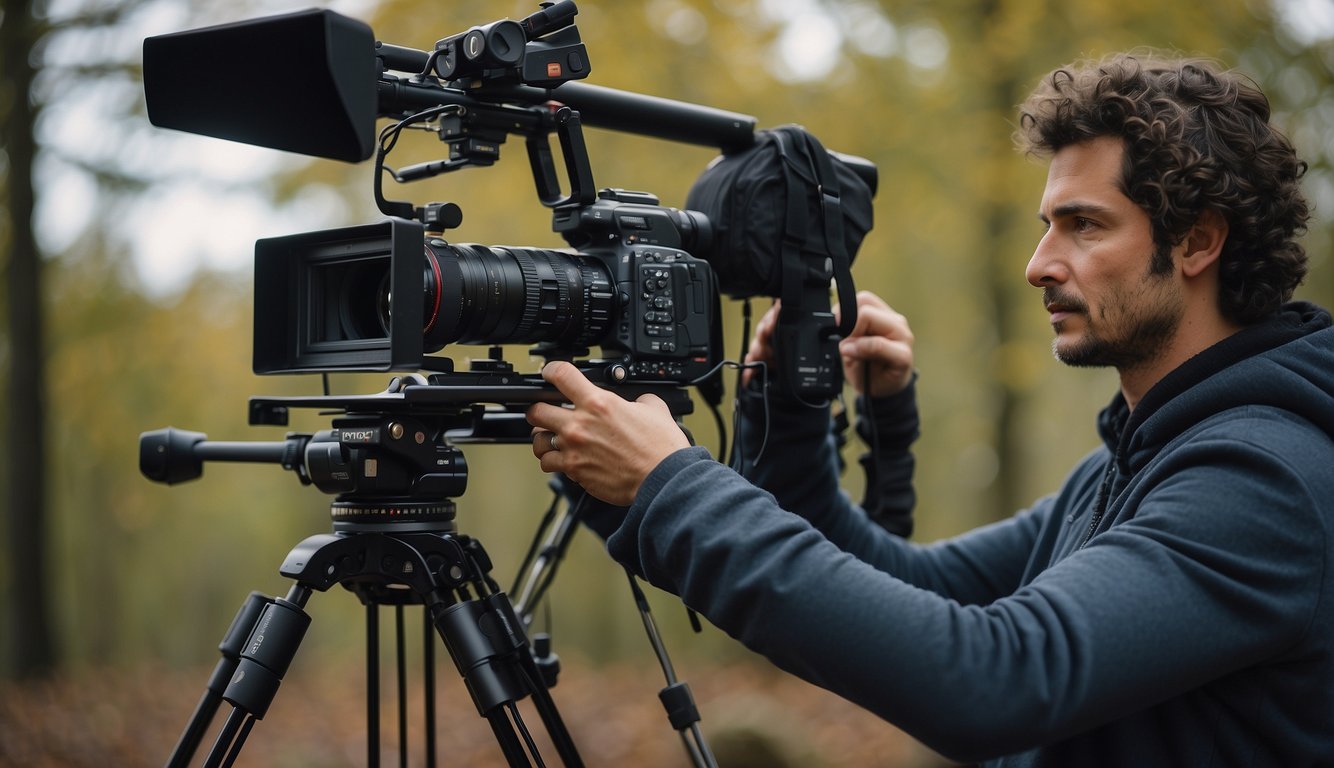
As a filmmaker on a budget, it’s important to understand the unique challenges and opportunities that come with creating a film with limited resources.
In this section, we’ll explore the importance of budget in filmmaking and key considerations for low-budget filmmakers.
The Importance of Budget in Filmmaking
Budget is a critical factor in filmmaking, as it determines the resources available to bring your vision to life. With a limited budget, you’ll need to make strategic decisions about where to allocate your resources to achieve the best possible outcome.
This might mean investing in high-quality equipment, hiring talented actors and crew, or focusing on post-production to enhance the final product.
At the same time, a limited budget can also present opportunities for creativity and innovation. With fewer resources, you’ll need to think outside the box and find new ways to achieve your vision. This might mean using unconventional filming techniques, leveraging the strengths of your cast and crew, or finding creative solutions to production challenges.
Key Considerations for Low-Budget Filmmakers
When working on a low-budget film, there are several key considerations to keep in mind:
- Prioritize your budget: Determine which aspects of your film are most important and allocate your resources accordingly. This might mean investing in high-quality equipment or hiring experienced crew members while cutting back on other areas.
- Maximize your resources: Make the most of what you have by leveraging the strengths of your cast and crew, using creative filming techniques, and finding ways to repurpose props and locations.
- Plan ahead: A solid plan is essential for any film project, but it’s especially important when working on a limited budget. Take the time to carefully plan out your production schedule, identify potential challenges, and find creative solutions to any problems that arise.
- Stay flexible: Despite your best efforts, unexpected challenges are bound to arise during production. Stay flexible and be willing to adjust your plans as needed to ensure a successful outcome.
By understanding the importance of budget in filmmaking and keeping these key considerations in mind, you can create a compelling film even on a limited budget.
Choosing the Right Camera
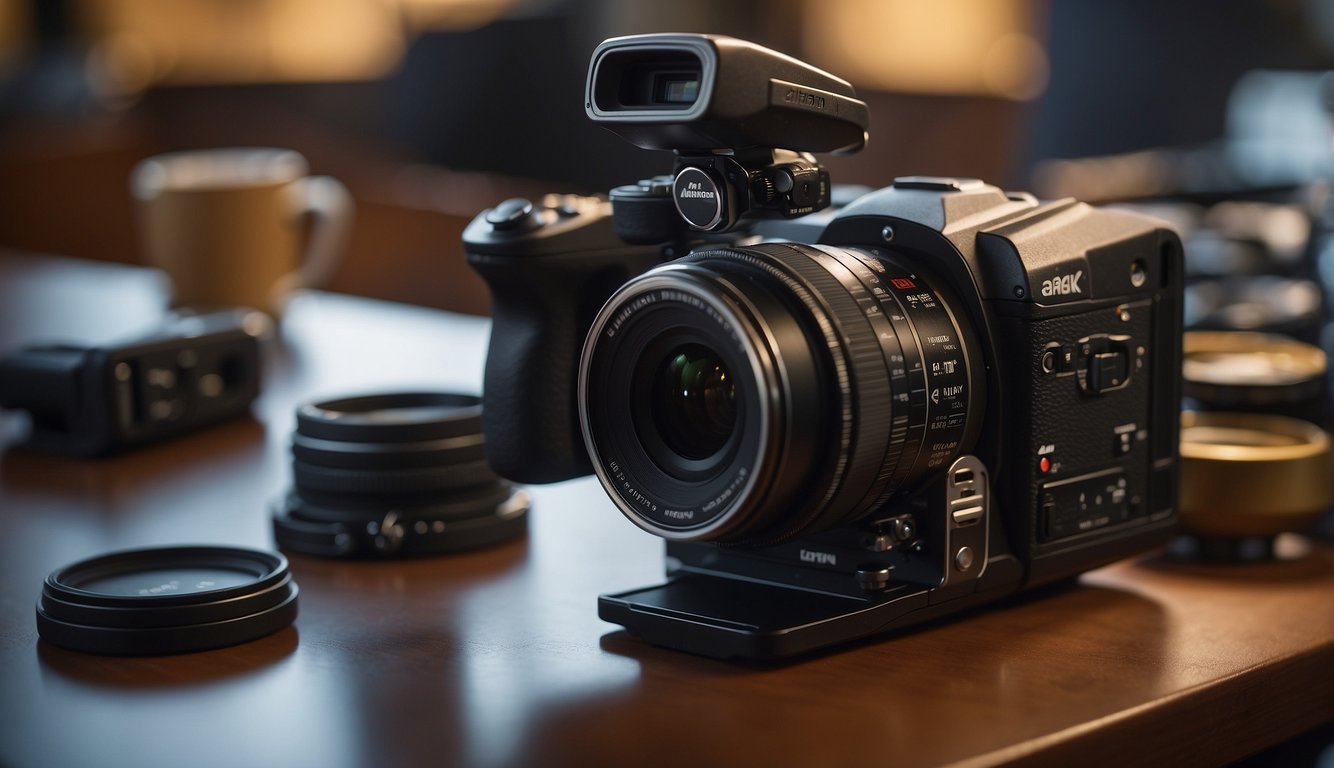
When it comes to choosing the right camera for filmmaking on a budget, there are several factors to consider. In this section, we’ll explore some of the most important factors that affect camera choice, as well as the different types of cameras available and their advantages.
Factors Affecting Camera Choice
Sensor Size
One of the most important factors to consider when choosing a camera for filmmaking is sensor size. A larger sensor will generally provide better image quality and low-light performance, while a smaller sensor may be more compact and affordable.
There are several different sensor sizes available, including full-frame, APS-C, Micro Four Thirds, and Four Thirds.
Full-frame sensors are the largest and provide the best image quality, but they are also the most expensive. APS-C sensors are a good compromise between image quality and affordability. In contrast, Micro Four Thirds and Four-Thirds sensors are smaller and more affordable but may sacrifice some image quality.
Camera Type
Another important factor to consider is the type of camera you need. There are several different types of cameras available, including DSLRs, mirrorless cameras, compact cameras, action cameras, camcorders, and cinema cameras.
DSLRs and mirrorless cameras are popular choices for filmmakers because they offer interchangeable lenses and high-quality video recording capabilities. Compact cameras and action cameras are more affordable and portable but may sacrifice some image quality.
Camcorders are designed specifically for video recording and may offer features like built-in zoom lenses and image stabilization. Cinema cameras are designed for professional filmmakers and offer the highest image quality and advanced features, but are also the most expensive.
Camera Types and Their Advantages
DSLR Cameras
DSLR cameras are popular choices for filmmakers because they offer interchangeable lenses and high-quality video recording capabilities. They are also relatively affordable and widely available. Some popular DSLR cameras for filmmaking include the Canon EOS M50 Mark II and the Sony A6400.
Mirrorless Cameras
Mirrorless cameras are similar to DSLRs but do not have a mirror mechanism. They offer interchangeable lenses and high-quality video recording capabilities and are often more compact than DSLRs. Some popular mirrorless cameras for filmmaking include the Sony ZV-1 and the Sony ZV-E10.
Compact Cameras
Compact cameras are small and portable, making them a good choice for filmmakers on a budget who need to travel light. They may sacrifice some image quality but are often more affordable than DSLRs and mirrorless cameras. Some popular compact cameras for filmmaking include the Lumix GH5 and the iPhone.
Camcorders
Camcorders are designed specifically for video recording and may offer features like built-in zoom lenses and image stabilization. They are often more affordable than DSLRs and mirrorless cameras but may sacrifice some image quality. Some popular camcorders for filmmaking include the Canon Vixia HF G50 and the Sony FDR-AX100.
Cinema Cameras
Cinema cameras are designed for professional filmmakers and offer the highest image quality and advanced features. They are often the most expensive type of camera but are essential for high-end productions. Some popular cinema cameras for filmmaking include the Blackmagic Design Pocket Cinema Camera 4K and the Sony Venice.
Camera Features for Filmmakers
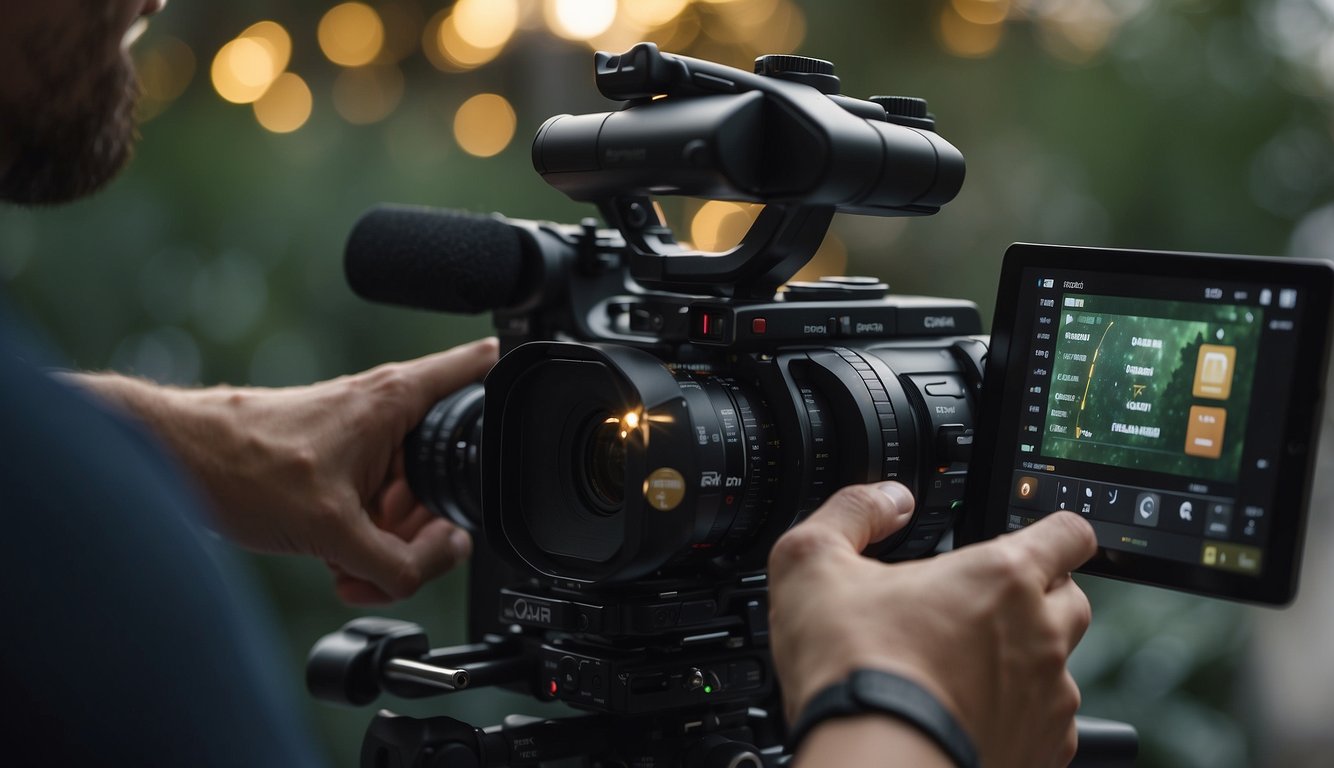
When it comes to choosing the best camera for filmmaking on a budget, there are several important features to consider. Here are some of the key factors to keep in mind when selecting a camera for your next film project.
Resolution and Video Quality
One of the most important features to consider when choosing a camera for filmmaking is resolution and video quality. Look for a camera that can shoot at least 4K resolution, as this will give you high-quality videos with excellent image detail.
Keep in mind that higher-resolution footage will take up more storage space, so make sure you have enough storage capacity for your needs.
Autofocus and Stabilization
Autofocus performance and speed are crucial for capturing high-quality footage. Look for a camera with fast and accurate autofocus, as this will help you capture sharp, in-focus footage. In-body image stabilization is also an important feature to consider, as it can help reduce camera shake and produce smoother footage.
Sensor and Dynamic Range
The camera’s sensor size and dynamic range are also important factors to consider. Look for a camera with a larger sensor size, as this will allow for better low-light performance and more shallow depth of field. A camera with a high dynamic range will also allow you to capture more detail in both the highlights and shadows of your footage.
Frame Rates and Slow Motion
Finally, consider the camera’s frame rates and slow-motion capabilities. Look for a camera that can shoot at least 60 frames per second (fps), as this will allow you to capture smooth, high-quality footage. If you plan on shooting slow-motion footage, look for a camera that can shoot at least 120 fps, as this will allow you to capture stunning slow-motion shots.
By considering these factors when choosing a camera for your next film project, you can ensure that you select a camera that meets your needs and produces high-quality footage.
Additional Camera Equipment
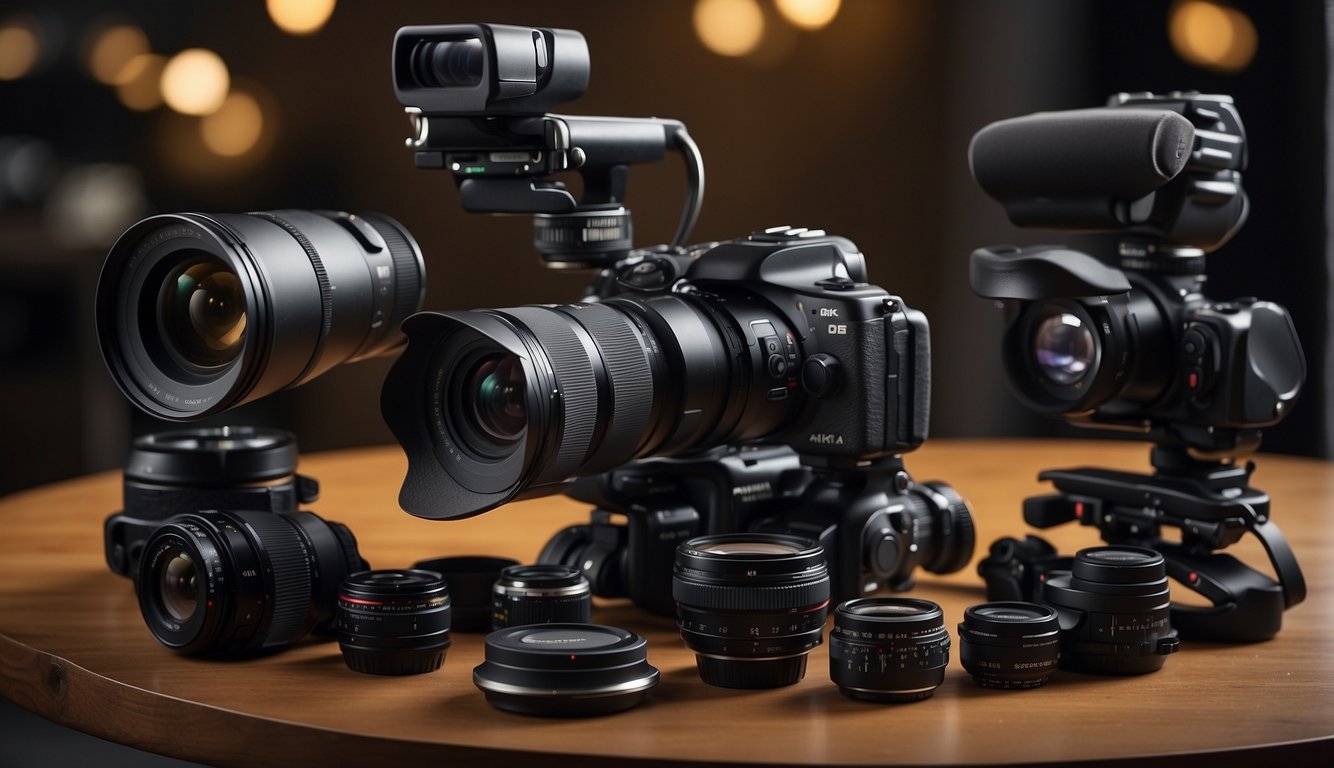
When it comes to filmmaking, having the right camera equipment can make all the difference. While a good camera is essential, there are also a few additional pieces of equipment that can help take your footage to the next level.
Lenses and Lens Mounts
Having a variety of lenses to choose from can help you achieve different looks and styles in your footage. Consider investing in a few prime lenses with different focal lengths, as well as a zoom lens for more versatility. Additionally, make sure you have the right lens mount for your camera. If you have a Micro Four Thirds (MFT) camera, for example, you’ll want to look for lenses with an MFT mount.
Stabilizing Gear and Gimbals
Smooth, stable footage is key to creating professional-looking films. Investing in stabilizing gear such as a tripod, monopod, or shoulder rig can help you achieve this. For even more stability, consider using a gimbal. Gimbals use motors to keep your camera steady while you move, allowing you to achieve smooth, fluid shots.
Audio and External Recorders
Good audio is just as important as good visuals when it comes to filmmaking. While your camera may have a built-in microphone, investing in an external microphone can greatly improve the quality of your audio. Additionally, using an external recorder can help you capture cleaner audio by bypassing the camera’s internal preamps.
By investing in additional camera equipment such as lenses, stabilizing gear, and audio equipment, you can take your filmmaking to the next level without breaking the bank. Consider your specific needs and budget when choosing equipment, and don’t be afraid to experiment to find what works best for you.
Camera Brands and Models
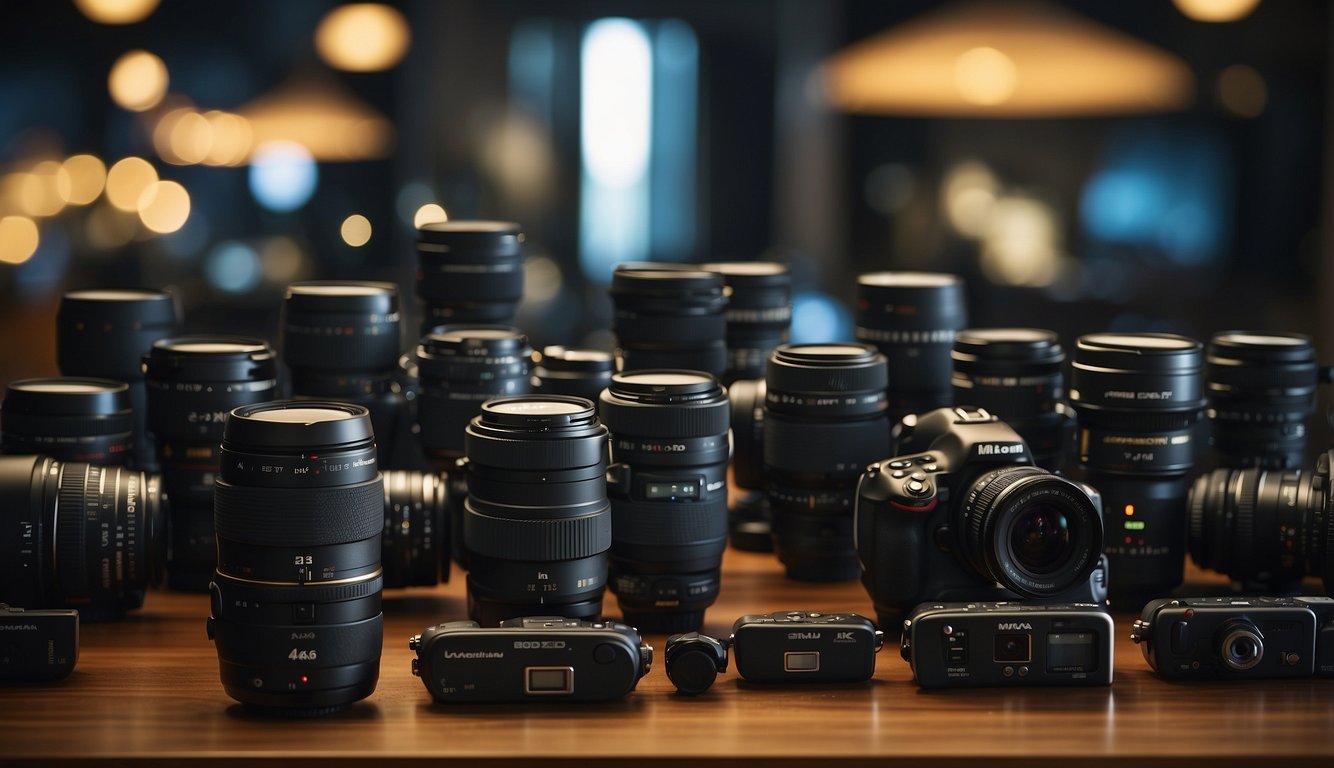
When it comes to budget filmmaking, choosing the right camera can make all the difference. Here are some of the top camera brands and models to consider:
Sony Cameras for Budget Filmmaking
Sony has long been a leader in the camera industry, and they offer several budget-friendly options for filmmakers.
The Sony Alpha a6000 is a popular choice, offering high-quality video and a compact design. For those looking for a step up, the Sony Alpha a7 II is a full-frame camera with impressive video capabilities.
Canon’s Budget Filmmaking Options
Canon is another well-known brand in the camera world, and they have several options for budget filmmakers.
The Canon EOS Rebel T7i is a great entry-level option, with solid video capabilities and a user-friendly interface. For those looking for a more advanced camera, the Canon EOS 80D offers excellent video quality and a range of features for more experienced filmmakers.
Panasonic and Fujifilm Choices
Panasonic and Fujifilm both offer budget-friendly options for filmmakers. The Panasonic Lumix G85 is a popular choice, with 4K video capabilities and a weather-sealed design.
The Fujifilm X-T4 is another great option, with impressive video quality and a range of features for more advanced filmmakers.
Blackmagic Design and Other Brands
For those looking for more specialized options, Blackmagic Design offers several cameras specifically designed for filmmaking.
The Blackmagic Pocket Cinema Camera 4K is a popular choice, with impressive video quality and a compact design. Other brands to consider include Olympus, Nikon, and Pentax, each with its unique offerings for budget filmmakers.
Overall, there are many camera brands and models to consider when it comes to budget filmmaking. By doing your research and considering your specific needs and preferences, you can find the perfect camera to bring your vision to life.
Post-Production Considerations
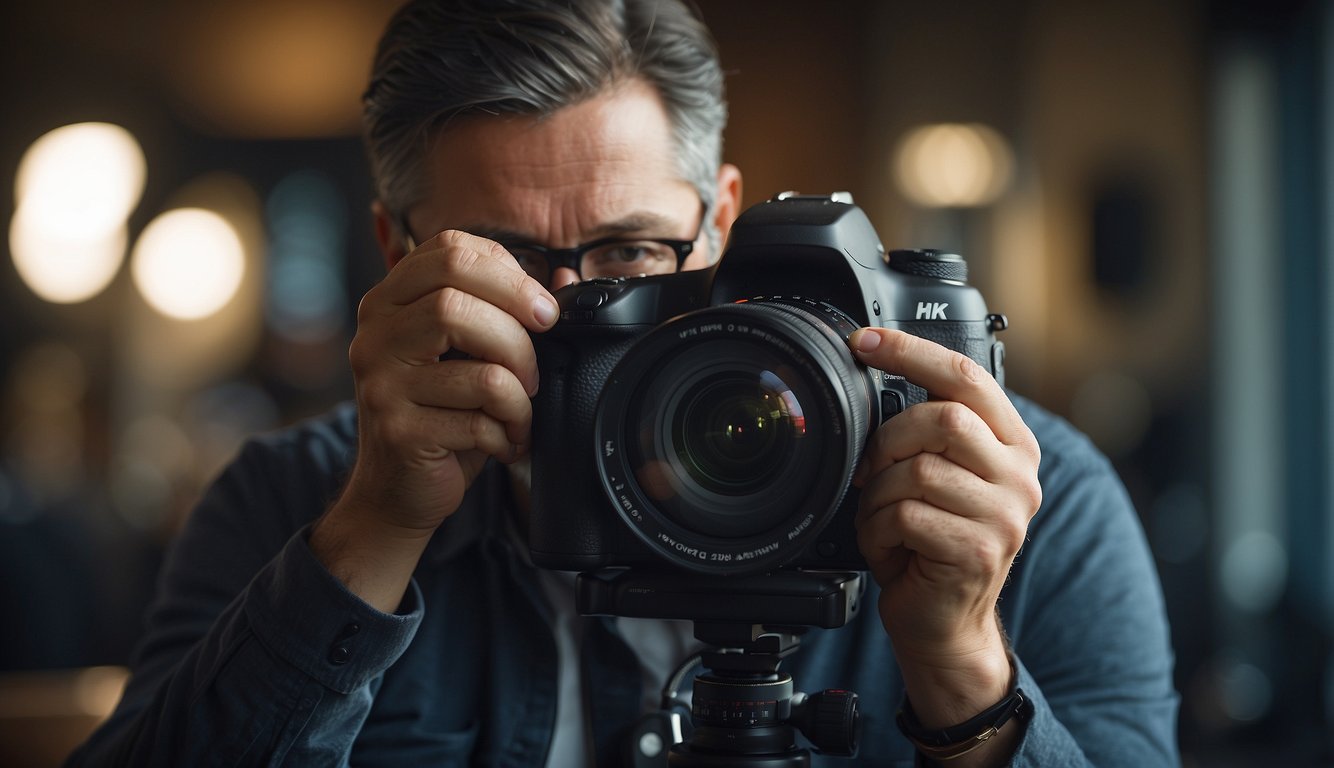
When it comes to filmmaking, post-production is just as important as capturing the footage. Here are some post-production considerations to keep in mind when working on a budget.
Editing Software and Codecs
Choosing the right editing software and codec is crucial to achieving the desired results. There are many options available, but one of the most popular and affordable is DaVinci Resolve Studio. This software is a great choice for those on a budget, as it offers a range of features for video editing, color correction, and audio post-production.
In terms of codecs, it’s important to choose one that provides the best balance between quality and file size. Shooting in a log mode or HLG can give you more flexibility in post-production, but it’s important to ensure that your editing software supports these formats.
Color Correction and Grading
Color accuracy is key in post-production, as it can make or break the overall look and feel of your film. DaVinci Resolve Studio offers a range of color correction and grading tools, including the ability to work with raw footage and apply LUTs (lookup tables) for a specific look.
When it comes to color grading, it’s important to have a good understanding of color theory and how different colors can affect the mood and tone of your film. It’s also important to ensure that your monitor is calibrated correctly, so that you can accurately judge the colors and contrast in your footage.
Overall, choosing the right editing software and codec, and having a good understanding of color correction and grading, are essential to achieving professional-looking results on a budget.
Maximizing Camera Performance

To get the most out of your camera while staying on a budget, you need to optimize its performance. Here are a few tips to help you do just that.
Optimizing Camera Settings
To optimize your camera settings, you need to understand the different picture profiles available. Picture profiles are pre-configured camera settings that adjust the colors, contrast, and other image characteristics. You can choose a picture profile that suits your shooting style and the look you want to achieve.
When shooting on a budget, you should stick to a picture profile that doesn’t require a lot of post-processing. For example, the Neutral picture profile is a great choice for filmmakers on a budget. It produces a flat image that is easy to color grade in post-production.
Another important setting to optimize is the video resolution. Shooting in a higher resolution like 4K can give you more flexibility in post-production. However, it also requires more storage space and processing power. If you’re on a tight budget, shooting in 1080p is still a great option.
Understanding Lighting and Exposure
Lighting and exposure are crucial to getting the best image quality out of your camera. When shooting on a budget, you need to use natural light as much as possible. If you’re shooting indoors, you can use affordable lighting kits to create a professional-looking setup.
When it comes to exposure, you need to understand how to expose your shots properly. Overexposure can cause blown-out highlights, while underexposure can result in noisy and dark footage. To avoid these issues, you should use the camera’s histogram to guide your exposure.
Low light performance is another important factor to consider when shooting on a budget. Some cameras perform better in low light than others. If you’re shooting in low light conditions, you should use a fast lens with a wide aperture to let in more light. Additionally, you can increase the camera’s ISO to make it more sensitive to light. However, be careful not to increase it too much, as this can result in noisy footage.
Practical Filmmaking Tips
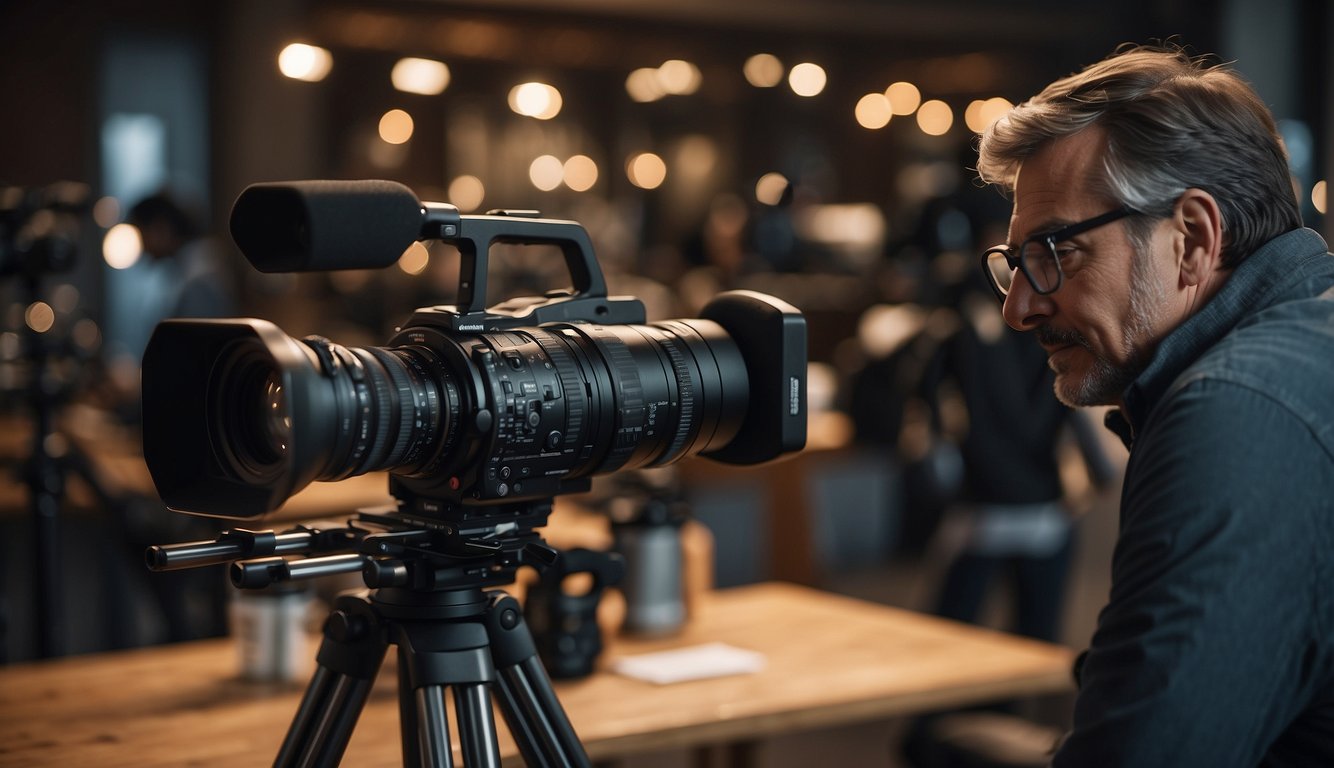
Shooting Techniques for Budget Cameras
When it comes to shooting with a budget camera, there are a few techniques that can help you get the most out of your equipment. First, it’s important to understand your camera’s limitations. For example, if your camera struggles in low light, try to shoot in well-lit areas or invest in some affordable lighting equipment.
Another important technique is to stabilize your shots. Shaky footage can be distracting and take away from the overall quality of your content. Consider investing in a tripod or stabilizer to keep your shots steady. Additionally, try to shoot at a higher frame rate to create smoother footage.
Lastly, experiment with different angles and perspectives. Shooting from unique angles can add visual interest to your content and make it stand out. Don’t be afraid to get creative and try out different techniques to make your footage look more professional.
Creating Professional-Looking Content
Creating professional-looking content with a budget camera is possible with a few tips and tricks. First, pay attention to your framing and composition. Make sure your shots are well-composed and visually appealing.
Next, consider investing in a good microphone. Audio quality is just as important as video quality when it comes to creating professional-looking content. A good microphone can help eliminate background noise and improve the overall sound quality of your content.
Finally, make use of post-production tools. Editing software can help you enhance your footage and make it look more professional. Experiment with color grading, adding music, and cutting your footage to create a cohesive and engaging final product.
By following these practical tips, you can create high-quality content with a budget camera. Whether you’re vlogging, creating content for YouTube, or shooting a documentary, these techniques can help you achieve professional-looking results.
Future-Proofing Your Investment
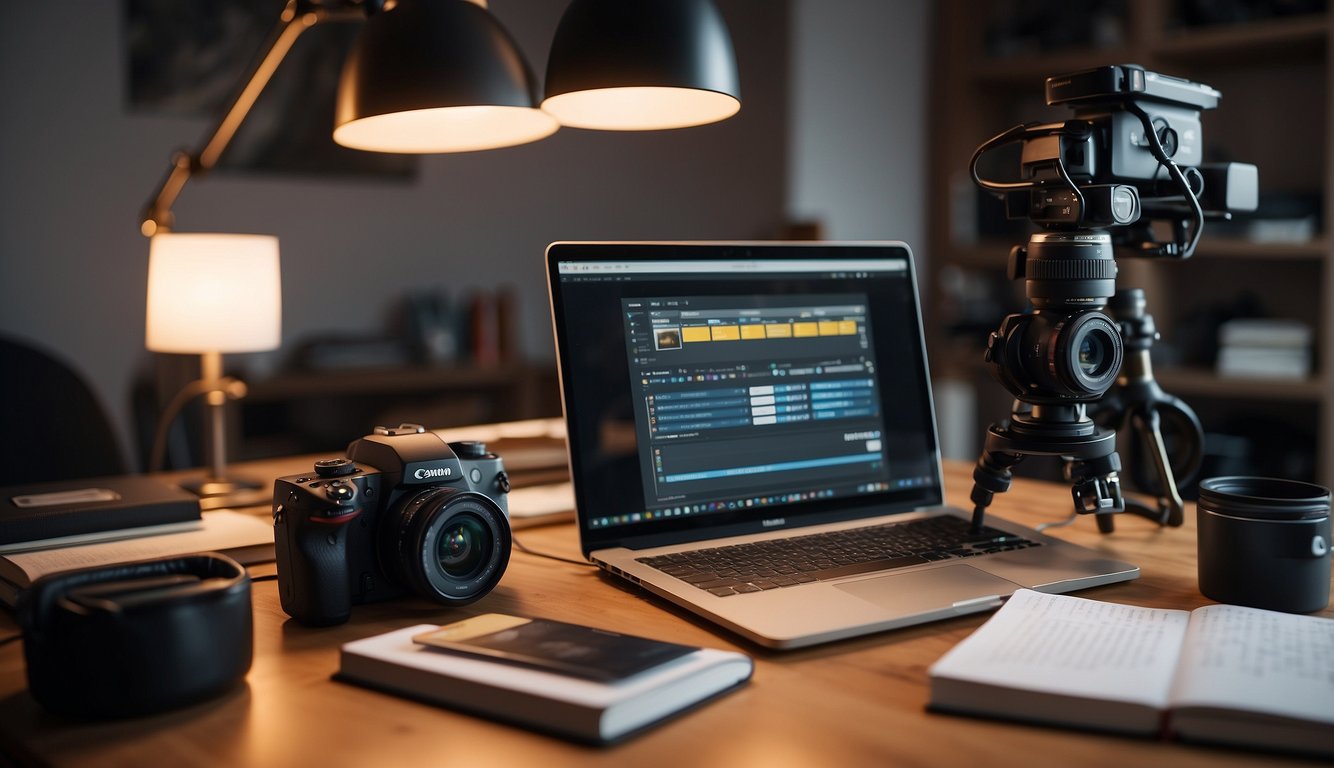
When it comes to investing in a camera for filmmaking, you want to make sure that your investment is future-proofed. This means that your camera should be able to keep up with the latest technological advancements and remain relevant for years to come. Here are a few things to consider when future-proofing your investment:
Upgradability and Tech Trends
One way to future-proof your investment is to choose an upgradable camera. This means that you can upgrade certain components of your camera as technology advances rather than having to buy a completely new camera. For example, some cameras allow you to upgrade the lens, battery, or even the image processor.
It’s also important to consider tech trends when future-proofing your investment. For example, cameras that have Bluetooth and WiFi capabilities allow you to transfer files and control your camera remotely easily.
Additionally, cameras with a high megapixel count and continuous shooting capabilities can help you capture high-quality footage and images.
Resale Value and Longevity
Another way to future-proof your investment is to choose a camera with a high resale value. This means that if you decide to upgrade or sell your camera in the future, you’ll be able to get a good return on your investment. Cameras with a carbon fiber composite build tend to have a higher resale value, as they are durable and long-lasting.
Longevity is also important when it comes to future-proofing your investment. Look for cameras with a Digic 8 image processor, as this is a newer technology that is likely to remain relevant for years to come. Additionally, cameras that can be used as webcams have become increasingly popular as more people are working remotely and need high-quality video conferencing capabilities.
By considering these factors, you can future-proof your investment and ensure that your camera remains relevant for years to come.
Conclusion
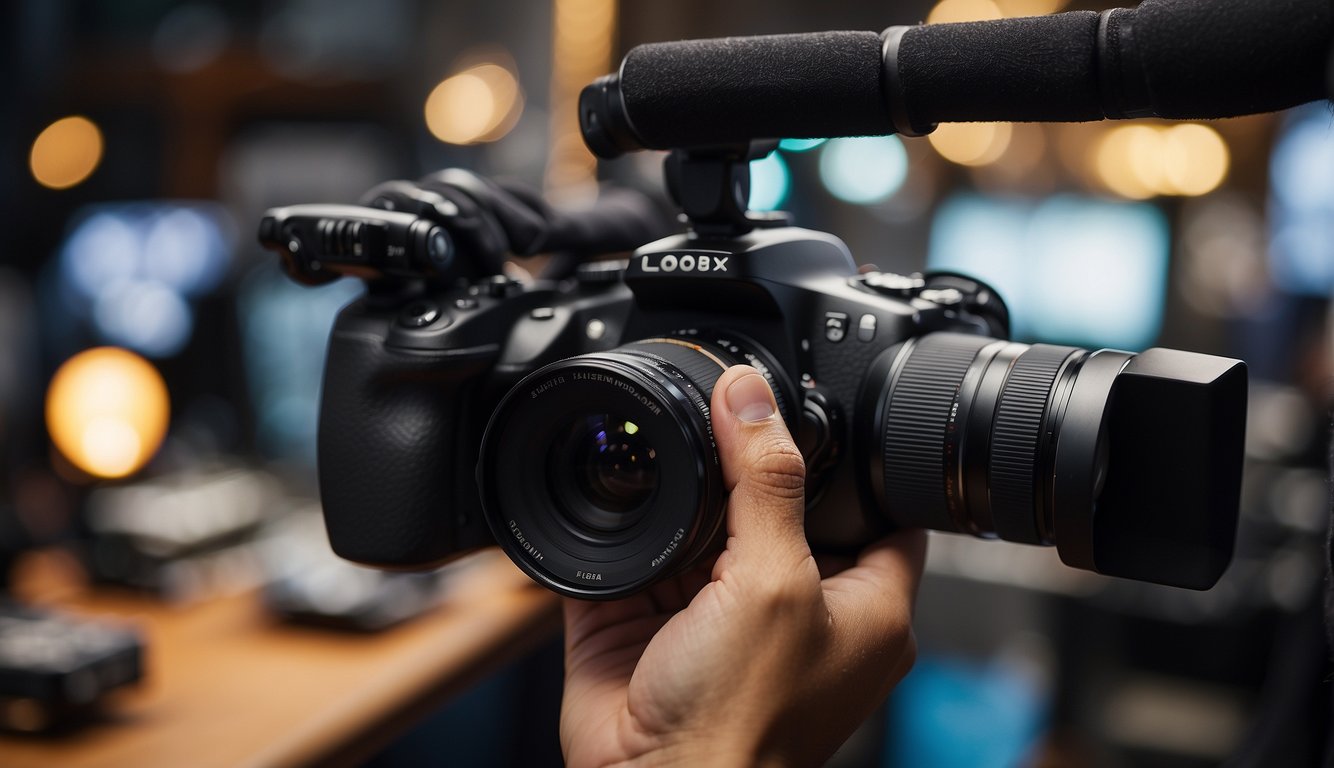
After conducting extensive research and testing, it is clear that there are several excellent options for filmmakers on a budget when it comes to choosing a camera.
Final Recommendations
Based on our findings, we highly recommend the following cameras for budget-conscious filmmakers:
- Sony A6400 – This camera offers excellent image quality, fast autofocus, and a compact design, making it perfect for filmmakers on the go.
- Panasonic Lumix GH5 – With its impressive video capabilities, durable build, and relatively low price point, the GH5 is an excellent choice for those looking for a high-quality camera without breaking the bank.
- Canon EOS M50 – The M50 is an excellent option for those just starting in filmmaking, as it offers solid image quality, user-friendly controls, and a budget-friendly price tag.
When choosing a camera, it’s important to consider your specific needs and budget. Keep in mind that investing in quality lenses and accessories can also make a significant difference in the overall quality of your footage.
Overall, with the options available on the market today, it is possible for filmmakers on a budget to capture high-quality footage without sacrificing too much in terms of features and performance.
